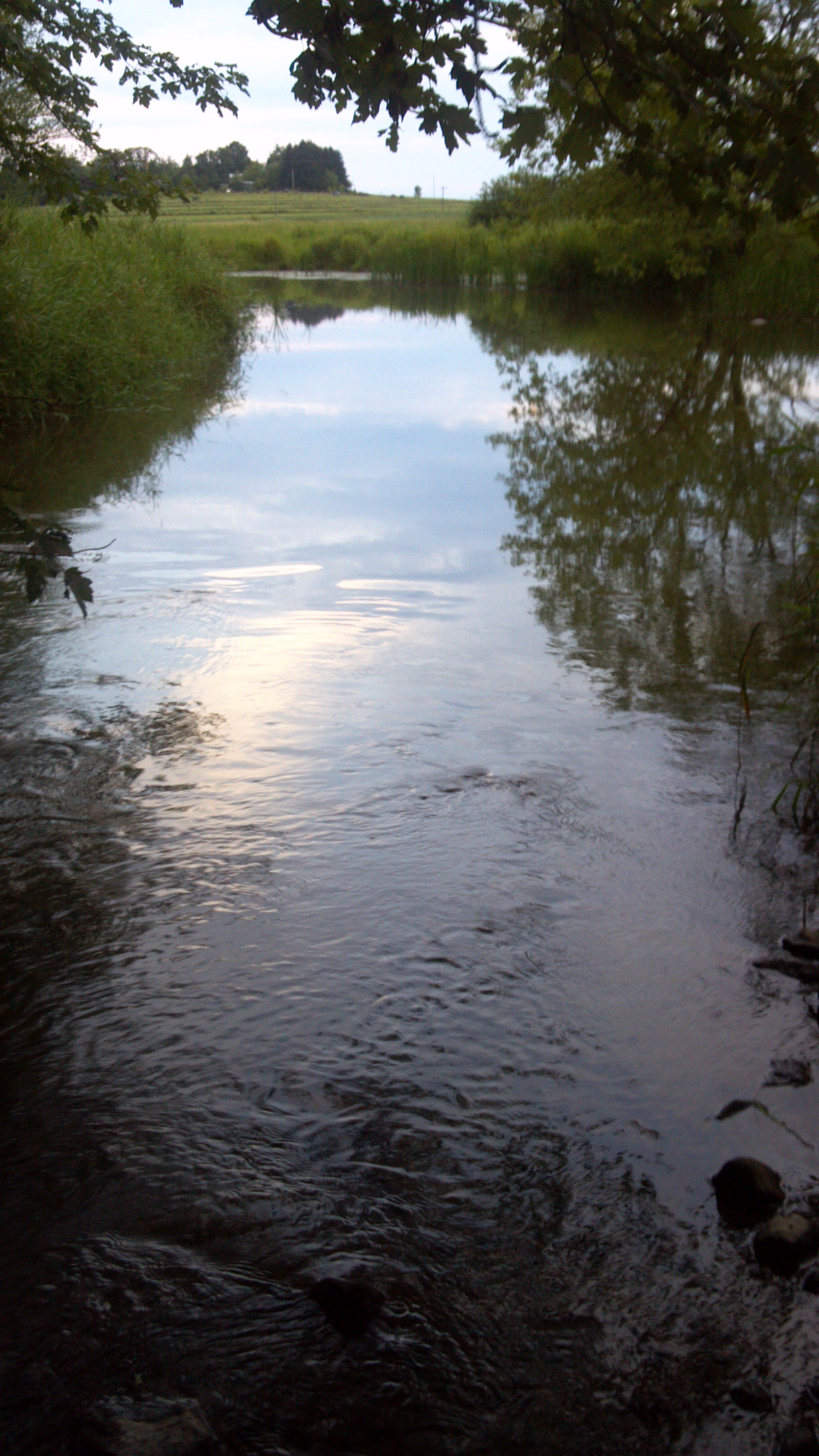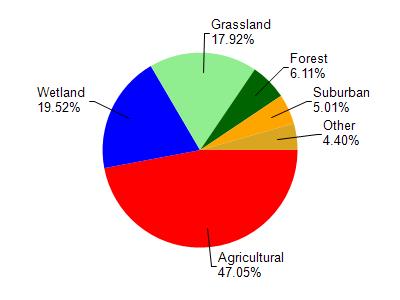
9.26 Miles
0 - 9.26
Macroinvertebrate, Warm Headwater, COOL-Warm Headwater
2019
Poor
Elevated Water Temperature, Impairment Unknown
Total Phosphorus, Unknown Pollutant
Manitowoc
No
No
Yes
Fish and Aquatic Life
Overview
Mud Creek (also known as Hills or Left Creek) flows through predominantly agricultural lands with some wetlands areas before discharging into the main stem of the Manitowoc River. The overall water quality, based on the Hilsenhoff Biotic Index, was fair (1990). Stream habitat evaluations rated the stream as fair (1990).
Date 2001
Author Michael Toneys
Impaired Waters
Mud Creek was evaluated every two year cycle from 2016 to 2022. Phosphorus levels have been consistently high, resulting in placement on the Impaired Waters List during the 2018 cycle. Temperature levels were too high during the 2016 cycle and was added to the list.
Date 2022
Author Ashley Beranek
Condition
Wisconsin has over 84,000 miles of streams, 15,000 lakes and milllions of acres of wetlands. Assessing the condition of this vast amount of water is challenging. The state's water monitoring program uses a media-based, cross-program approach to analyze water condition. An updated monitoring strategy (2015-2020) is now available. Compliance with Clean Water Act fishable, swimmable standards are located in the Executive Summary of Water Condition in 2018. See also the 'monitoring and projects' tab.
Reports
Recommendations
Citizen-Based Stream Monitoring
Collect chemical, physical, and/or biological water quality data to assess the current overall stream health. The data can inform management decisions and may be used to identify impaired waters for biennial lists.
Management Goals
Wisconsin's Water Quality Standards provide qualitative and quantitative goals for waters that are protective of Fishable, Swimmable conditions [Learn more]. Waters that do not meet water quality standards are considered impaired and restoration actions are planned and carried out until the water is once again fishable and swimmable
Management goals can include creation or implementation of a Total Maximum Daily Load analysis, a Nine Key Element Plan, or other restoration work, education and outreach and more. If specific recommendations exist for this water, they will be displayed below online.
Monitoring
Monitoring the condition of a river, stream, or lake includes gathering physical, chemical, biological, and habitat data. Comprehensive studies often gather all these parameters in great detail, while lighter assessment events will involve sampling physical, chemical and biological data such as macroinvertebrates. Aquatic macroinvertebrates and fish communities integrate watershed or catchment condition, providing great insight into overall ecosystem health. Chemical and habitat parameters tell researchers more about human induced problems including contaminated runoff, point source dischargers, or habitat issues that foster or limit the potential of aquatic communities to thrive in a given area. Wisconsin's Water Monitoring Strategy was recenty updated.
Grants and Management Projects
Monitoring Projects
| WBIC | Official Waterbody Name | Station ID | Station Name | Earliest Fieldwork Date | Latest Fieldwork Date | View Station | View Data |
|---|
| 73600 | Mud Creek | 10013310 | Mud Creek- Hwy 151 | 9/23/1998 | 11/6/2019 | Map | Data |
| 73600 | Mud Creek | 10013331 | Mud Creek- Thompkins Road | | | Map | Data |
| 73600 | Mud Creek | 10039355 | Mud Creek at Tompkins Rd | | | Map | Data |
|

Watershed Characteristics
Mud Creek is located in the Lower Manitowoc River watershed which is 168.33 mi². Land use in the watershed is primarily agricultural (47%), wetland (19.50%) and a mix of grassland (17.90%) and other uses (15.50%). This watershed has 264.70 stream miles, 2,910.36 lake acres and 19,995.06 wetland acres.
Nonpoint Source Characteristics
This watershed is ranked High for runoff impacts on streams, Not Ranked for runoff impacts on lakes and High for runoff impacts on groundwater and therefore has an overall rank of High. This value can be used in ranking the watershed or individual waterbodies for grant funding under state and county programs.However, all waters are affected by diffuse pollutant sources regardless of initial water quality. Applications for specific runoff projects under state or county grant programs may be pursued. For more information, go to surface water program grants.
Mud Creek (Left, Hills) T18n, R21e, S12 is considered a Macroinvertebrate, Warm Headwater, COOL-Warm Headwater under the state's Natural Community Determinations.
Natural communities (stream and lake natural communities) represent model results and DNR staff valiation processes that confirm or update predicted conditions based on flow and temperature modeling from historic and current landscape features and related variables. Predicated flow and temperatures for waters are associated predicated fish assemblages (communities). Biologists evaluate the model results against current survey data to determine if the modeled results are corect and whether biological indicators show water quaity degradation. This analysis is a core component of the state's resource management framework. Wisconsin's Riverine Natural Communities.
Cool (Warm-Transition) Headwaters are small, sometimes intermittent streams with cool to warm summer temperatures. Coldwater fishes are uncommon to absent, transitional fishes are abundant to common, and warm water fishes are common to uncommon. Headwater species are abundant to common, mainstem species are common to absent, and river species are absent.
Warm Headwaters are small, usually intermittent streams with warm summer temperatures. Coldwater fishes are absent, transitional fishes are common to uncommon, and warm water fishes are abundant to common. Headwater species are abundant to common, mainstem species are common to absent, and
river species are absent.